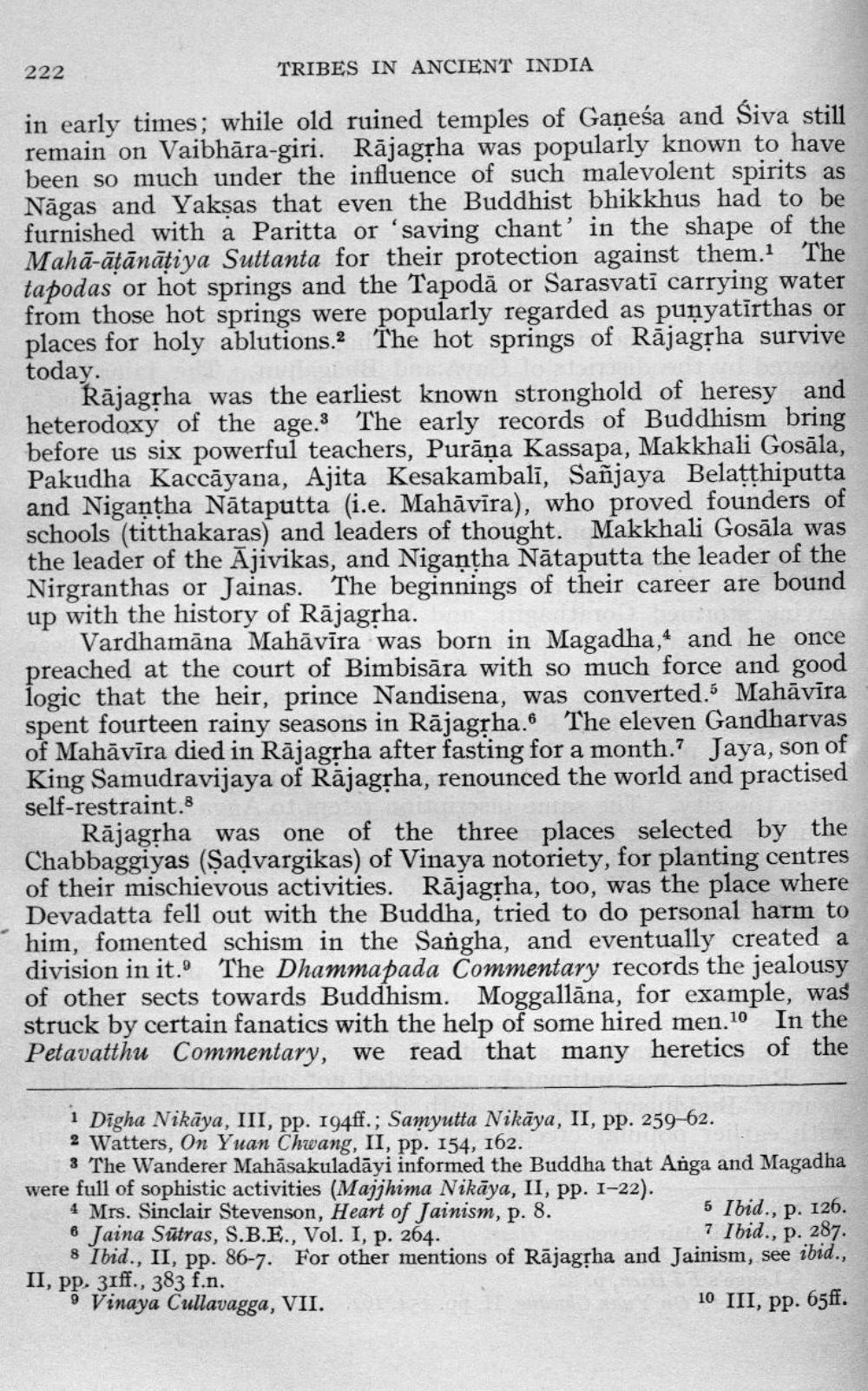________________
222
TRIBES IN ANCIENT INDIA
in early times; while old ruined temples of Gaņeśa and Siva still remain on Vaibhāra-giri. Rājagsha was popularly known to have been so much under the influence of such malevolent spirits as Nāgas and Yaksas that even the Buddhist bhikkhus had to be furnished with a Paritta or 'saving chant' in the shape of the Mahā-ātānāțiya Suttanta for their protection against them. The tapodas or hot springs and the Tapodā or Sarasvati carrying water from those hot springs were popularly regarded as punyatirthas or places for holy ablutions. The hot springs of Rājagrha survive today.
Rājagrha was the earliest known stronghold of heresy and heterodoxy of the age. The early records of Buddhism bring before us six powerful teachers, Purāņa Kassapa, Makkhali Gosāla, Pakudha Kaccāyana, Ajita Kesakambalī, Sañjaya Belaţthiputta and Nigantha Nātaputta (i.e. Mahāvīra), who proved founders of schools (titthakaras) and leaders of thought. Makkhali Gosāla was the leader of the Ajivikas, and Nigantha Nātaputta the leader of the Nirgranthas or Jainas. The beginnings of their career are bound up with the history of Rājagrha.
Vardhamāna Mahāvīra was born in Magadha,4 and he once preached at the court of Bimbisāra with so much force and good logic that the heir, prince Nandisena, was converted. Mahāvīra spent fourteen rainy seasons in Rājagsha. The eleven Gandharvas of Mahāvīra died in Rājagrha after fasting for a month.? Jaya, son of King Samudravijaya of Rājagrha, renounced the world and practised self-restraint.8
Rājagrha was one of the three places selected by the Chabbaggiyas (Sadvargikas) of Vinaya notoriety, for planting centres of their mischievous activities. Rājagrha, too, was the place where Devadatta fell out with the Buddha, tried to do personal harm to him, fomented schism in the Sangha, and eventually created a division in it. The Dhammapada Commentary records the jealousy of other sects towards Buddhism. Moggallāna, for example, was struck by certain fanatics with the help of some hired men.10 In the Petavatthu Commentary, we read that many heretics of the
1 Digha Nikāya, III, pp. I94ff.; Samyutta Nikaya, II, pp. 259–62. 2 Watters, On Yuan Chwang, II, pp. 154, 162.
3 The Wanderer Mahāsakuladāyi informed the Buddha that Anga and Magadha were full of sophistic activities (Majjhima Nikāya, II, pp. 1-22). 4 Mrs. Sinclair Stevenson, Heart of Jainism, p. 8.
5 Ibid., p. 126. 6 Jaina Sūtras, S.B.E., Vol. I, p. 264.
7 Ibid., p. 287. 8 Ibid., II, pp. 86-7. For other mentions of Rājagpha and Jainism, see ibid., II, pp. Ziff., 383 f.n. Vinaya Cullavagga, VII.
10 III, pp. 65ff.




